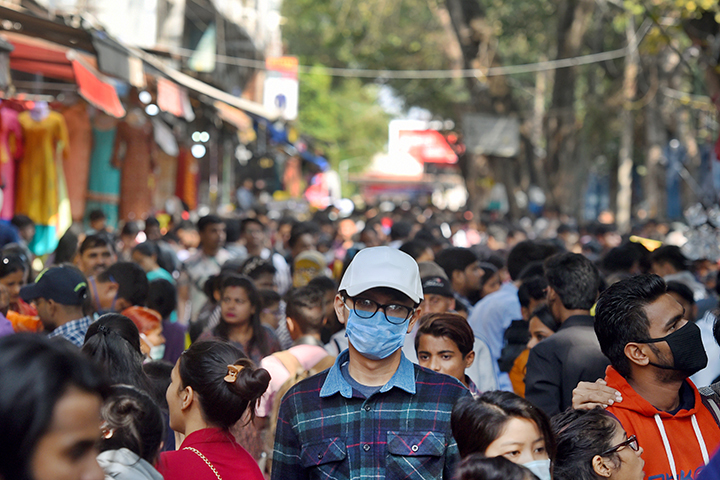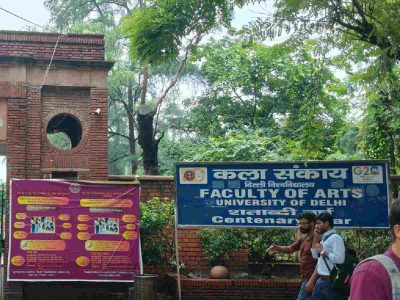Delhi continues to be one of the metropolises of India which have a high rate of contamination. Lifting of restrictions, though necessary, may lead to further spikes
The Coronavirus is continuing its rampage in Delhi. The number of new positive cases in India’s capital, according to the Delhi State Health Bulletin, was 660 on 22 May. This takes the total cumulative cases in the Capital city to 12,319 with 5,897 recovered, discharged and migrated.
The number of deaths, which is 208, comes with the disclaimer that it is where “primary cause of death is found to be Covid-19, as per the report of Death Audit Committee on the basis of case sheets received from hospitals”. Why this disclaimer is needed would perhaps be the Delhi government issuing an order that says dead bodies would not be tested for Covid-19.
Secretary of Health and Family Welfare Department Padmini Singla’s revised order of 17 May states: “No sample for Covid-19 test will be taken of dead body. However, if doctors are satisfied from clinical examination that the cause of death may be Covid-19 infection, the dead body may be released as suspect Covid-19 infected dead body”.
So, for example, if a person dies at home, or is admitted for treatment of another disease at the hospital and succumbs, they may not be tested for Covid-19.
Where the Delhi government is going in the right direction is by ramping up testing, with 1,60,255 people tested as on 22 May. But with a population of 1.9 crore and the likelihood of many being asymptomatic, an easing of restrictions and people going about their daily lives could put thousands at risk.
In the days before Lockdown 4.0 was announced and the Delhi government decided to ease its restrictions, infection numbers were still high. On the 16th, the total positive cases registered that day was 438, followed by 422 on the 17th. This came a little lower to 299 cases on the 18th, but since then numbers have been steadily rising. On the 19th it was back up with 500 positive cases, 20th saw 534 cases, and then on the 21st, 571 positive cases.
Now with domestic flights being resumed from Monday, May 25th, Delhi government and its people need to be even more cautious even as public transport and markets are now open.
Union Minister for Civil Aviation Hardeep Puri tweeted that “All airports and air carriers are being informed to be ready for operations from 25th May. Standard Operating Procedures (SOPs) for passenger movement are also being separately issued by civil aviation ministry”.
Reports suggest that the domestic flights that will be allowed to operate are likely to connect all major tier-I cities, which includes Maharashtra’s capital Mumbai. Maharashtra has seen a spike of 2,250 new Covid-19 cases and 65 deaths reported on 20 May. Which now brings the total number of cases to 39,297, including 27,581 active cases.
The economic factor
Many have been rendered jobless through the lockdown which was imposed on 25 March. It was seen as a necessary move to not allow the community spread of Covid-19, and now with Delhi government easing restrictions, it is seen as a necessary move to help people get back to making a living.
Many people’s incomes dried up, and they are just now starting to pick up the pieces. Like Kulbir Singh, an autorickshaw driver in Delhi. He told Patriot that he had began facing a financial crisis soon after the lockdown began. To avail of free rations, he found himself waiting in long queues day after day before tasting success.
When the ration ran out, what came to his help was Delhi governments Rs 5,000 sanctioned for drivers who are PSV badge holders, and even to e-rickshaw owners without PSV. There are at least 1,13,074 autorickshaws in Delhi, according to Economic Survey 2018-19.
There are even more e-rickshaws in the city, with many operated by migrants. We noticed during the lockdown that many e-rickshaw owners had turned them into mobile shops, selling vegetables and fruits – an essential people could not stop buying.
Ola and Uber drivers started leaving for their home states. With restrictions easing, Ola has decided to lay off 1,400 people, that is 45% of the total workforce. Bhavish Aggarwal, co-founder and chief executive of Ola, conveyed to the team over email that the company’s revenue had dropped by 95% in the last two months of the lockdown.
Even delivery services Swiggy and Zomato announced big job cuts, with Swiggy laying off 1,100 jobs. Now with restaurants being allowed to ply on delivery basis, the number of takers may be few and those performing the task even fewer.
From the economic point of view, it is important to bring some semblance of normalcy back to the capital city, which has a huge number of migrant workers and those living either on the tip of the poverty line or below it. At the same time, how well the authorities keep a check on social distancing norms and its violations will be a decider in keeping a second, worse wave of the virus at bay.





